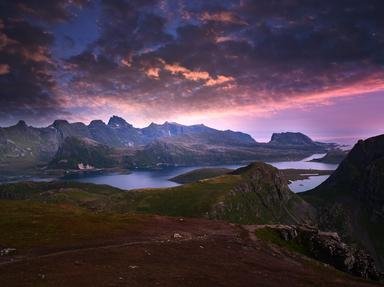Quiz Answer Key and Fun Facts
1. Norway is bordered by three countries; from which country did it achieve independence in 1905?
2. What is the capital of Norway?
3. In the 1960s, oil was discovered under the inhospitable waters of the sea between Norway, the UK, and other countries in the region. Which sea was this?
4. One of the most well-known features of Norway's geography is its large number of fjords. What led to the formation of fjords?
5. The Svalbard Archipelago (better known to English and German speakers as Spitsbergen) lies to the north of the Norwegian mainland, well inside the Arctic Circle. The islands contain a secure botanical storage system in case the world's food supply is disrupted or destroyed. Which plant parts are kept at Svalbard?
6. In 2012 the United Nations produced its first report ranking countries in a specific area of performance. For the first nine years Norwegians smiled as their country was reported to be in the top five of all countries worldwide - what emotion was being measured?
7. The Sami people live in the far north of several adjoining countries - Finland, Norway, Sweden and Russia. Although only 10% of the Sami follow this occupation, they are well-known to many European children for herding a particular animal all over the region. Which animal do the Sami herd?
8. The coast of north-west Norway is host to some of the fiercest tidal currents in the world, causing, in two cases, the world's strongest whirlpools. What is an alternative name, based on a Dutch word, for whirlpools found in the sea?
9. Approximately one-third of Norway lies in the Arctic Circle. For several months a year this part of Norway will be lit up by a phenomenon known as what?
10. The Vikings were composed largely of people from Norway, Denmark, and Sweden who sent longships to raid many other areas. Some raids led to long-term settlements while others were more 'hit and run'. The Viking conquest that was furthest from Scandinavia was Vinland - in what modern country would you find Vinland, eh?
Source: Author
flopsymopsy
This quiz was reviewed by FunTrivia editor
agony before going online.
Any errors found in FunTrivia content are routinely corrected through our feedback system.
